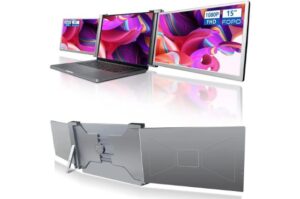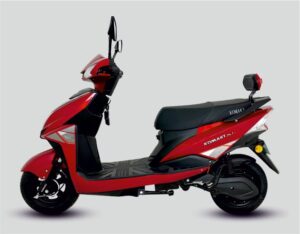
In our increasingly data-driven society, having easy means to see and comprehend data is more vital than ever. After all, the demand for data visualization skills among employees grows year after year. Employees and business owners at all levels must comprehend data and its implications.
What is Data Visualization?
Data visualization is the graphical depiction of information and data. Data visualization tools, which include visual components such as charts, graphs, and maps, make it easy to view and comprehend trends, outliers, and patterns in data. Furthermore, it allows our employees or business owners to convey facts to non-technical audiences without causing confusion.
Data visualization can be used for a variety of objectives, and it is crucial to highlight that it is not limited to data teams. Management uses it to communicate organizational structure and hierarchy, and data analysts and data scientists use it to find and explain patterns and trends.
Why is Data Visualization Important?
The importance of data visualization is that it allows people or organizations to easily examine, interact with, and interpret data. Even if the data is basic or complex, the appropriate representation can bring everyone on the same page, regardless of skill level.
It’s difficult to think of a professional industry that doesn’t benefit from better data understanding. Understanding data improves every STEM sector, as well as fields such as government, finance, marketing, history, consumer products, service industries, education, sports, and so on.
While data visualization is a storytelling tool, there are understandable practical, real-life implications. Because vision is so prevalent, it is also one of the most useful professional abilities to cultivate. The better you can visually communicate your idea, whether in a dashboard or a slide deck, the more you will profit from that information. Nowadays, skill sets are evolving to meet a data-driven environment. Professionals who can utilize data to make decisions and use graphics to communicate stories about when data informs the who, when, where, and how are becoming increasingly valuable.
While traditional education often draws a clear distinction between creative storytelling and technical analysis, the current professional world also honours people who can bridge the gap: data visualization lies squarely between analysis and visual storytelling.
Benefits of Data Visualization
- The ability to digest information quickly, develop insights, and make faster decisions;
- A better knowledge of the next steps that must be taken to improve the company;
- A better ability to keep the audience’s attention with the information they can understand.
- An easy conveyance of information that enhances the possibility to share insights with everyone concerned;
- Because data is more accessible and intelligible, there is less need for data scientists;
- An increased ability to act on results fast, resulting in success with more speed and fewer mistakes.
Other Benefits of Data Visualization Software for the Business:
- Predicts Future Trends
- Proficient Data Analysis
- Enhanced Response Time
- Flawless Pattern Recognition
- Enhanced Collaboration
- Collecting and Combining Data from Different Sources
Data Visualization examples
The most frequent visualization strategy in the early days was to use a Microsoft Excel spreadsheet to translate the information into a table, bar graph, or pie chart. While best data visualization tools are still widely used, more complex techniques are now available, including the following:
- Infographics
- Bubble Clouds
- Bullet Graphs
- Heat Maps
- Time-Series Charts
- Fever Charts
Data Storytelling with Data Visualization Process
Data Storytelling is the concept of crafting a narrative based on the data and analytics you’ve gathered to support your story’s hypothesis. You present a unified narrative that delivers a final message and action to take, just like you would when telling a story orally to someone else. Only with data instead of your voice. To convey a good story, data storytelling employs a variety of data forms such as scatter plots, geographic maps, timelines, line graphs, pie charts, bar charts, heat maps, and tree charts.
Difference Between Data Storytelling and Data Visualization
Data storytelling varies from data visualization in that the narrators of your tale must provide a more comprehensive perspective of your message in a way that your audience can readily understand. On the other hand, is a technique used to improve your storytelling. This common commercial communication tool converts large volumes of difficult and valuable data into something that people can understand. To catch your audience’s attention, employ intentional pictures that are:
- Appropriate
- Legible
- Not misleading
Data visualization and storytelling work in tandem to help you tell the greatest story possible by utilizing data to add clarity, truth, and authenticity to your narrative.
Creating a Data Storytelling Framework
When building a data story, ensure it has a beginning, middle, and end. You know what you want to say and how you want to say it. Understanding the context and results of your data analytics will provide you with the information you need to convey your story.
You’ll need to enlist certain best practices to develop the framework in order to accomplish this. Here are some practical tips to make your data visualization and storytelling more effective:
- Define your objectives.
- Present a compelling narrative.
- Incorporate key elements of analysis storytelling like Plot, context, characters and the end.
- Be objective
- Choose suitable types of visualizations.
- Follow graphic design best practices.
- Use the proper tools.
- Make an insightful and human story.
- Create a story that complements both storytelling and data visualizations.
Conclusion:
It is simple to integrate data visualization tools into a firm to improve analytical thinking and gain better insights from data. It provides users with rapid and data-driven business insights. Data visualization should offer pertinent, essential data that should clearly identify a course of action.
Read Next Blog:
Why SecOps Is The Future Of Information Security







